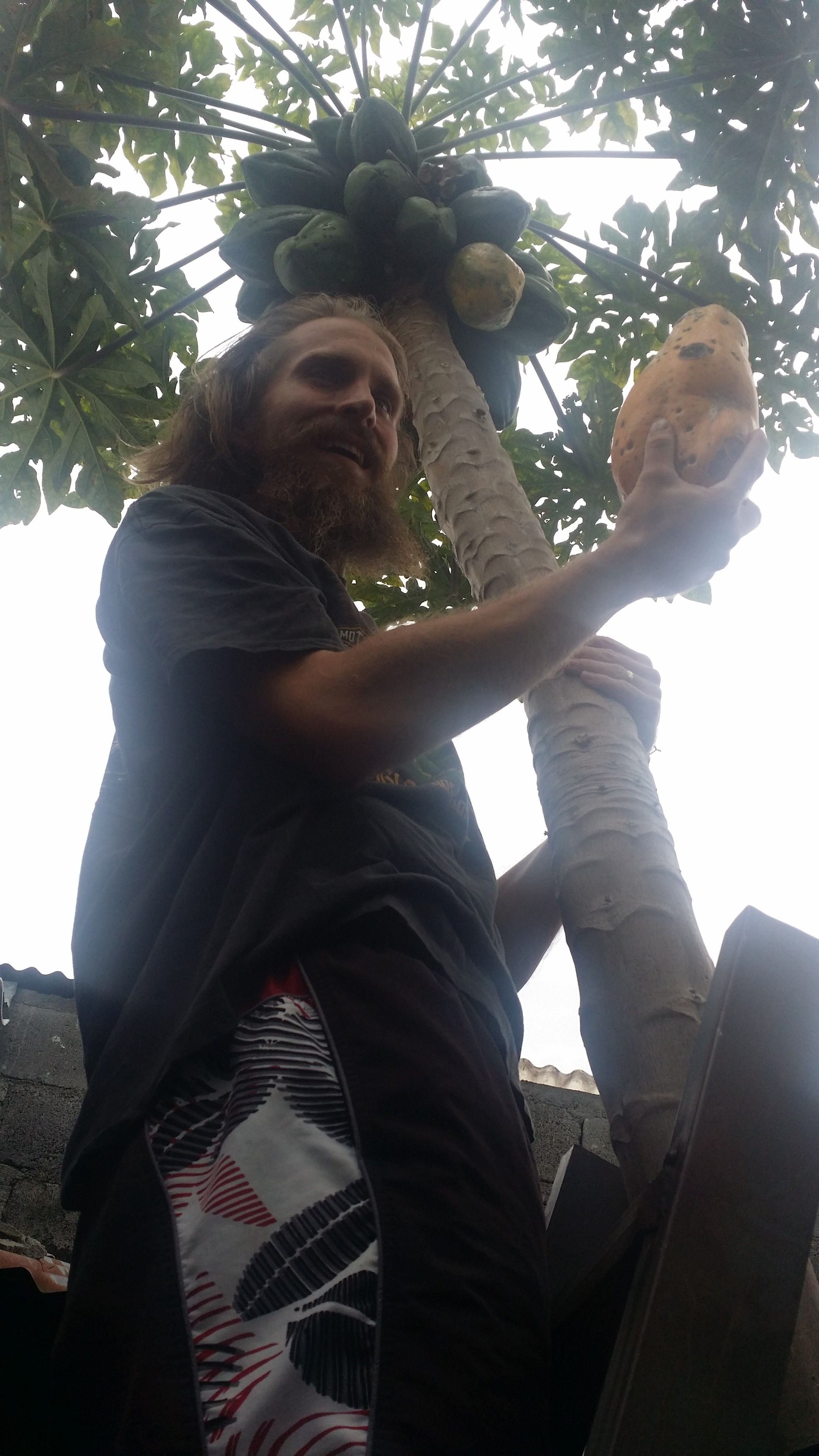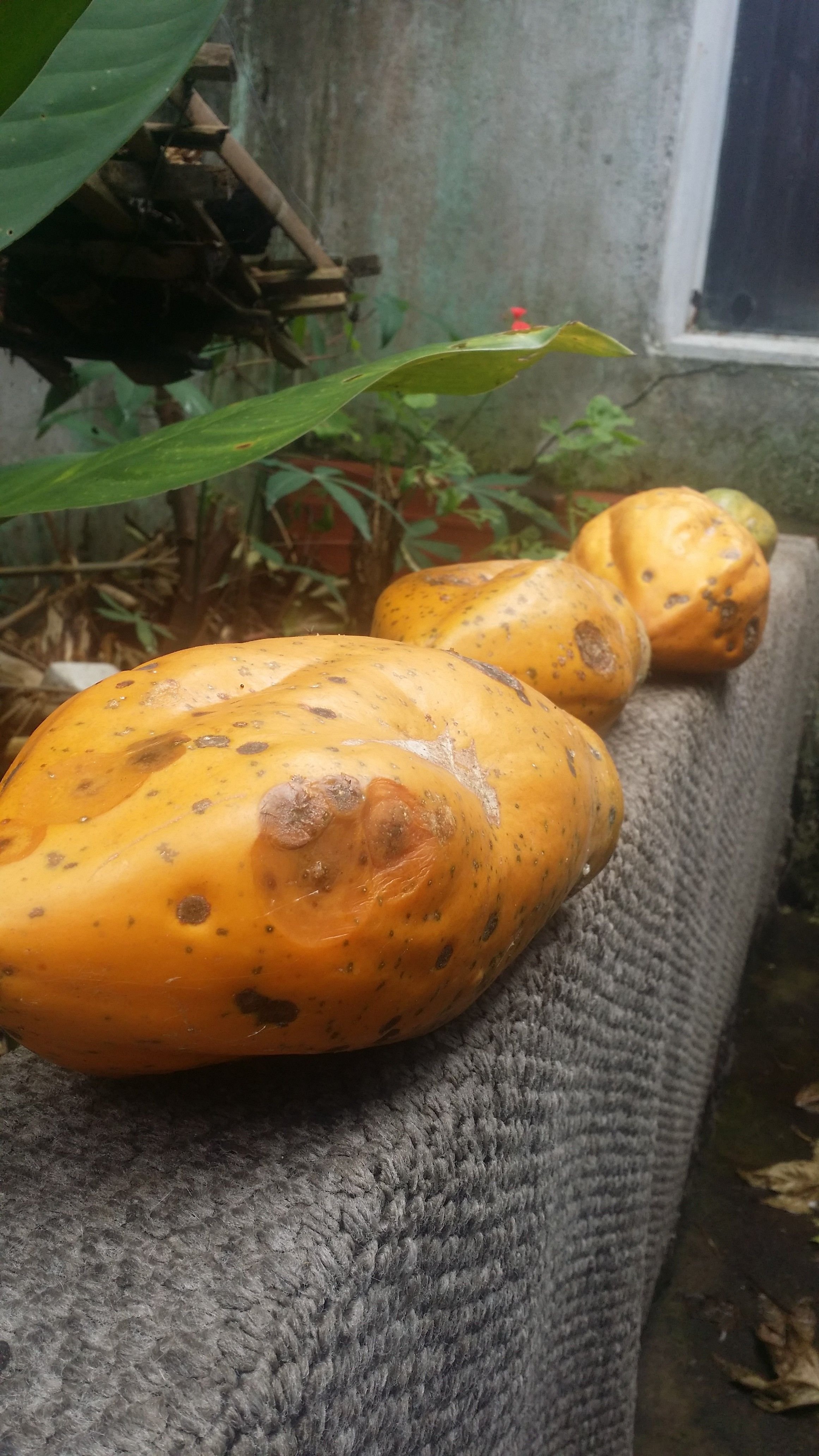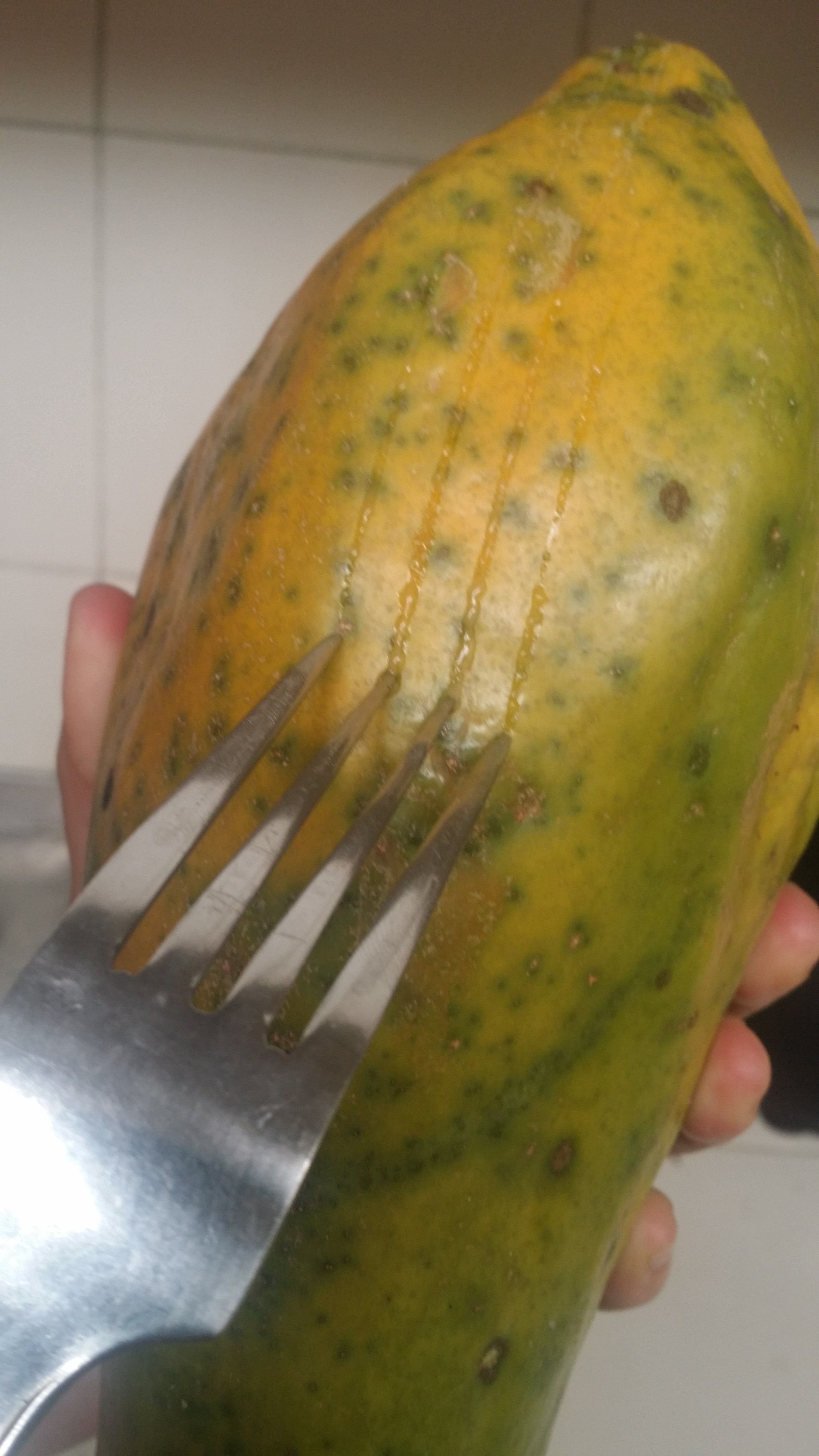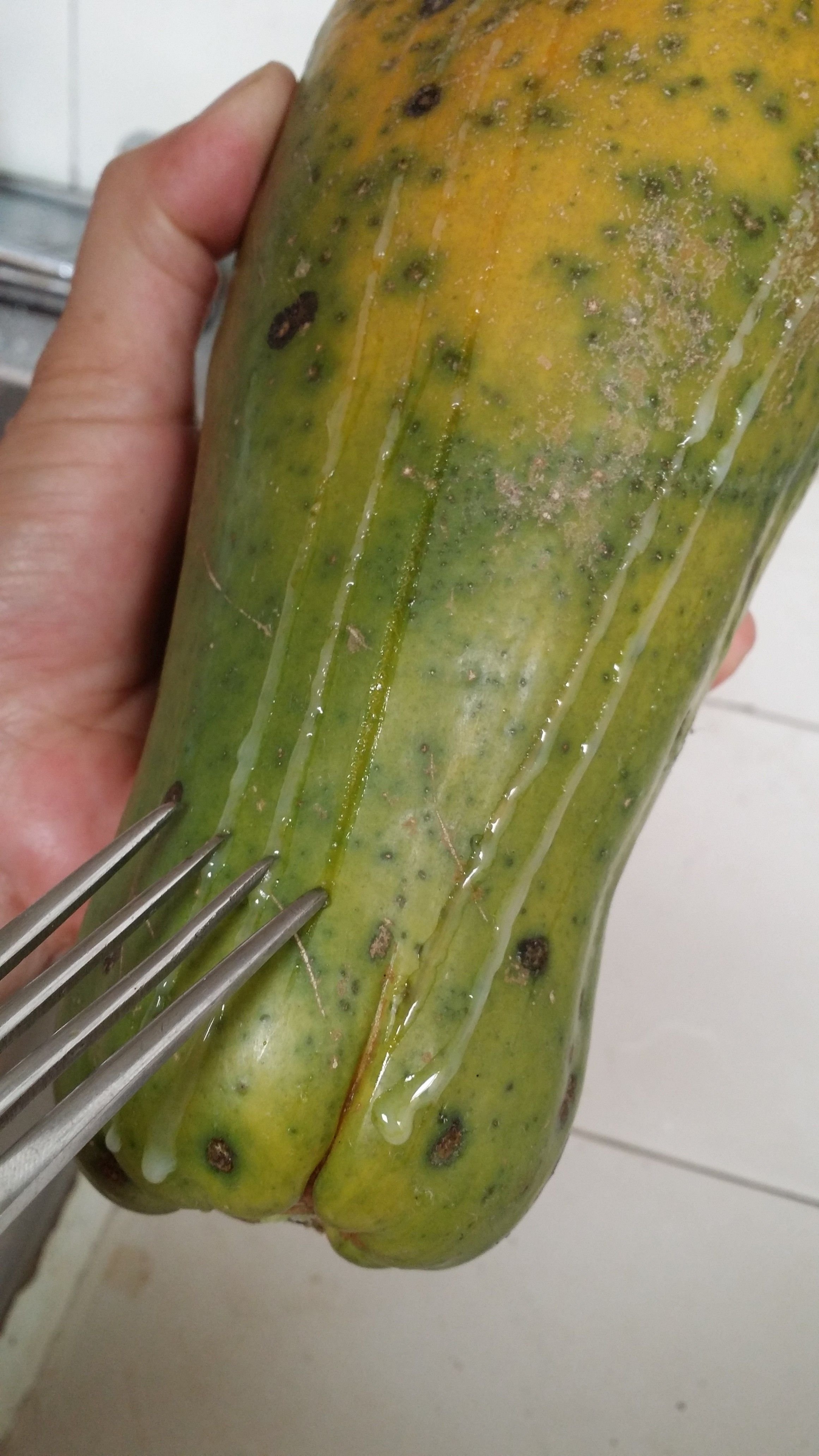Papayas
Papayas are an interesting and easy to grow fruit, as long as you live in the tropics that is. We have been experimenting with papayas for a number of years and today I would like to share with you some of our experiences!
Many years ago when we first moved into this concrete box, before we were able to buy a small patch of homestead, we did our best to make the place a little more green! One of the ways we did that was building a four meter by one meter raised garden bed on top of the concrete slab. From the edge of the raised bed, where I am standing, it is approximately 3 feet deep, or 90 centimeters. Before filling it with organic material sourced from the trash around town, I used a hammer drill to break a line of the cement slab down the center of the raised bed. Then we filled it up with grass clippings, pineapple cuttings, horse poop and lots of other organic garbage we managed to find around town.
Today, we are graced with Papaya in this place!
The papaya tree requires a lot of water, but we get enough rain here in the mountains so there is no need for irrigation. This makes it a wonderful source of food and fun in the garden, for very little work.
The papaya fruit is filled with lots of circular black seeds. In my experience it is best to plant the papaya seed exactly where you want it to grow, because nearly all seeds easily germinate, the new seedlings have a very fine root mesh and are very susceptible to death if transplanted.
According to the California Rare Fruit Growers website, Carica papaya comes in two main varieties, the larger mexican variety, shown here, and the smaller hawaiian variety, which is more suited for supermarket distribution.
Papayas grow tall relatively quickly, and here you can see that I no longer can reach the fruits, even standing on the edge of the raised bed on my very tippy-toes!
Another day we brought the ladder over and finally were able to harvest these papayas. You can build a ladder from bamboo or weld scrap metal together or even buy one at the store. This one is of the scrap metal variety.

Here we have harvested 4 papayas. You can see that there is some minor insect damage, and one is just a bit overripe, but there is a lot of papaya to go around! We never apply poisons or chemicals, or even pay much attention to the plant or its fruits until harvest time ;p

Before eating the papayas, especially the less ripe ones, we lightly scratch a fork across the flesh of the fruit. You can see in these photos that the papaya releases a white viscous liquid, here its called la mancha.

After the slight scratching, the mancha will come out of the papaya and can be wiped off and the papaya prepared for eating! Papaya has a light and sweet flavor and mixes well with other fruits in fruit salad.

Here is a preview of an upcoming article by my wife about making papaya jelly spread! Looks delicious!

